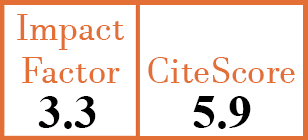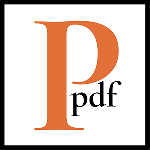Full Papers
Diagnostic performance of particle-based multi-analyte technology compared to indirect immunofluorescence in screening for anti-nuclear antibodies in patients with autoimmune rheumatic diseases
F. Buzzulini1, D. Villalta2, G. Previtali3, M.G. Alessio4, G. Cafaro5, E. Bartoloni6, R. Gerli7, N. Bizzaro8
Collaborator/s: A. Ghirardello1, M. Zen2, P. Migliorini3, O. Bistoni4, C. Perricone5, F. Topini6, F. Franceschini7, I. Cavazzana8, S. Piantoni9, M. Fredi10, S. Masneri11, E. Garrafa12, S. Cheleschi13, P. Parronchi14, D. Cammelli15, M. Infantino16, M. Manfredi17, M. Benucci18, A. Rigon19, L. Arcarese20, S. Del Rosso21, V. Canti22, P. Rovere Querini23, V. Riccieri24, M. Tampoia25, M. Fornaro26
- Immunology and Allergology, S. Maria degli Angeli Hospital, Pordenone, Italy.
- Immunology and Allergology, S. Maria degli Angeli Hospital, Pordenone, Italy.
- Laboratory of Clinical Chemistry, ASST Papa Giovanni XXIII, Bergamo, Italy.
- Laboratory of Clinical Chemistry, ASST Papa Giovanni XXIII, Bergamo, Italy.
- Rheumatology Unit, Department of Medicine and Surgery, University of Perugia, Italy.
- Rheumatology Unit, Department of Medicine and Surgery, University of Perugia, Italy.
- Rheumatology Unit, Department of Medicine and Surgery, University of Perugia, Italy.
- Laboratory of Clinical Pathology, Azienda Sanitaria Universitaria Integrata di Udine, Italy. nic.bizzaro@gmail.com
- Rheumatology Unit, Department of Medicine, University of Padua, Italy.
- Rheumatology Unit, Department of Medicine, University of Padua, Italy.
- Clinical Immunology Unit, University of Pisa, Italy.
- Rheumatology Unit, Department of Medicine and Surgery, University of Perugia, Italy.
- Rheumatology Unit, Department of Medicine and Surgery, University of Perugia, Italy.
- Rheumatology Unit, Department of Medicine and Surgery, University of Perugia, Italy.
- Rheumatology and Clinical Immunology Unit, Department of Clinical and Experimental Sciences, ASST Spedali Civili and University of Brescia, Italy.
- Rheumatology and Clinical Immunology Unit, Department of Clinical and Experimental Sciences, ASST Spedali Civili and University of Brescia, Italy.
- Rheumatology and Clinical Immunology Unit, Department of Clinical and Experimental Sciences, ASST Spedali Civili and University of Brescia, Italy.
- Rheumatology and Clinical Immunology Unit, Department of Clinical and Experimental Sciences, ASST Spedali Civili and University of Brescia, Italy.
- Rheumatology and Clinical Immunology Unit, Department of Clinical and Experimental Sciences, ASST Spedali Civili and University of Brescia, Italy.
- Laboratory of Clinical Chemistry, Department of Molecular and Translational Medicine, ASST Spedali Civili and University of Brescia, Italy.
- Rheumatology Unit, Department of Medicine, Surgery and Neuroscience, Azienda Ospedaliera Universitaria Senese, Policlinico Le Scotte, Siena, Italy.
- Department of Experimental and Clinical Medicine, University of Florence, Italy.
- Department of Experimental and Clinical Medicine, University of Florence, Italy.
- Laboratory of Immunology and Allergology, San Giovanni di Dio Hospital, Florence, Italy.
- Laboratory of Immunology and Allergology, San Giovanni di Dio Hospital, Florence, Italy.
- Rheumatology Unit, San Giovanni di Dio Hospital, Florence, Italy.
- Clinical Immunology and Rheumatology, University Campus Biomedico, Rome, Italy.
- Clinical Immunology and Rheumatology, University Campus Biomedico, Rome, Italy.
- IRCCS San Raffaele, Milan, Italy.
- IRCCS San Raffaele, Milan, Italy.
- IRCCS San Raffaele, Milan, Italy.
- Rheumatology, Sapienza University, Rome, Italy.
- Clinical Pathology, Presidio Ospedaliero SS. Annunziata, Taranto, Italy.
- Rheumatology Unit, Department of Emergence and Transplantation (DETO), University of Bari, Italy.
on behalf of the Forum Interdisciplinare per la Ricerca nelle Malattie Autoimmuni (FIRMA Group)
CER18563
2025 Vol.43, N°9
PI 1622, PF 1628
Full Papers
Free to view
(click on article PDF icon to read the article)
PMID: 40371559 [PubMed]
Received: 22/01/2025
Accepted : 26/03/2025
In Press: 08/05/2025
Published: 18/09/2025
Abstract
OBJECTIVES:
In autoimmune rheumatic disease (ARD), ANA testing is crucial for orienting clinical diagnosis and further diagnostic workups. We evaluated the performance of a fully automated system using particle-based multi-analyte technology (PMAT) and compared it to indirect immunofluorescence (IIF) on HEp-2 cells.
METHODS:
Serum samples from 1241 subjects were collected in 13 Italian rheumatology centres. The ARD group (782 samples) included 164 patients affected by systemic lupus erythematosus, 277 by Sjögren’s syndrome, 132 by systemic sclerosis, 106 by idiopathic inflammatory myopathy, and 103 by undifferentiated connective tissue disease. The control group comprised 120 healthy donors, 221 patients affected by other autoimmune/inflammatory disorders, and 118 patients affected by acute or chronic infections.
RESULTS:
In the overall ARD population, HEp-2 IIF showed higher sensitivity when compared to Aptiva/PMAT (92.8 vs. 82.6%) except in the case of idiopathic inflammatory myopathy (58.5% vs. 82.1%). Conversely, Aptiva/PMAT showed higher specificity (77.9% vs. 54.0%) and a higher likelihood ratio for positive results (3.81 vs. 2.08). Double-positive samples provided an LR for positive results higher than one method alone (6.31).
CONCLUSIONS:
This is the first study comparing Aptiva/PMAT against HEp-2 IIF in ANA detection. While the diagnostic sensitivity of this novel method is lower than that of HEp-2 IIF, its high specificity is a valuable tool in the diagnosis of patients affected by ARD and improves their stratification into specific disease subsets. The combined use of HEp-2 IIF and Aptiva/PMAT assays increases diagnostic accuracy and significantly enhances the potential to accurately classify patients affected by ARDs.


